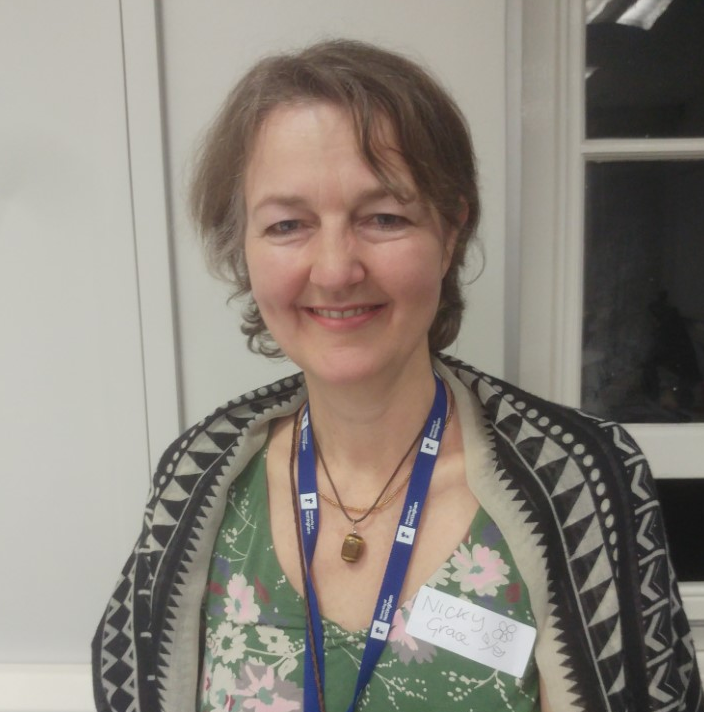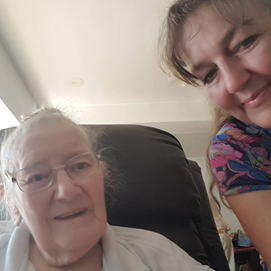
April 22, 2019, by ahxfc
Nicky Grace – Archiving Midwifery, 20 March 2019
‘For researchers, historians, midwives and childbearing women and families, it is vital that we are able to understand and explore our history from a range of sources.’
In this guest blog post Nicky Grace, PhD candidate in Creative Writing at the University of Nottingham, summarises her wonderful presentation on her exciting Archiving Midwifery project which she gave at our first seminar on 20 March 2019. Nicky would appreciate any feedback and advice on her bid proposal to ensure its success, so please do feel free to contribute any ideas in the comment section of this blog!
I was honoured to have the opportunity to talk to the Health Humanities Early Bird Research Group on 20 March 2019 about the ‘Archiving Midwifery’ project. This blog outlines the points I made in my presentation, beginning with some background about me and the rationale for the project, and ending with a brief description of a bid I made for ‘seedcorn’ funding. The funding was a small amount of money that had become available through the Health Humanities group in Nottingham to help ‘earlybird’ research projects get off the ground. Though the bid was unsuccessful, the bidding process was helpful as a way of firming up the vision for Archiving Midwifery, and for drawing together a team that will hopefully go on to make further successful funding bids so that the vision of a national midwifery archive can eventually become reality.
My background
I’m currently undertaking a PhD in Creative Writing. The main focus of my PhD is a memoir which explores the personal and social meanings of midwifery and birth. As part of my PhD I am also researching and writing a critical piece on life writing about women’s and midwives’ experiences of birth.
My first degree was in English, but I subsequently trained as a midwife and I have a Masters degree in Research Methods in Health. From that time (2011) I have been very involved with clinical research and I am also a practising midwife.
Why does my background matter for the Archiving Midwifery Project? My experiences as a midwife and as a researcher and creative writer have led me to believe that it is vital there is a means of storing in a way that is accessible – archiving – material related to midwifery and birth. There are two reasons for this belief.
Rationale for the Archiving Midwifery project
The first reason is that we need to build a repository of material that already exists, but which is currently scattered and not easily accessible even to the most determined of scholars. Such material includes historical midwifery records; birth and death records; journals of midwives and women; and other original source material that provides evidence about historical midwifery and birth practices. We know there is a great deal of such material sitting in boxes in the attics and under the beds of amateur or even professional midwifery historians, currently without a home.
The second reason is even more dynamic and is to do with encouraging and facilitating the creation and archiving of material relating to current practices in midwifery and birth. Such work might include recorded interviews, journals, artworks, even with the right permissions and under the right conditions, some medical and legal records for the benefit of future historians.
For researchers, historians, midwives and childbearing women and families, it is vital that we are able to understand and explore our history from a range of sources, including original material such as birth records and contemporary accounts. If we don’t have archives of material from a range of sources, researchers end up relying purely on mainstream cultural representations of midwifery and birth. While these are also important sources, and should be part of the archive, we can’t rely wholly on what can be ideologically-loaded representations of issues around birth and midwifery. A good example of this is in 18th and 19th century literary depictions of midwives including Dickens’ ‘Sarah Gamp’, a pejorative depiction of a midwife in literature that did a great disservice to public perceptions of midwifery.
The future for the project
Given these imperatives, when the opportunity to apply for some ‘seedcorn’ funding via the Health Humanities group arose, I very quickly constructed a bid. The bid aimed to win a small amount of money that could be used to gather stakeholders and draw up a much larger bid for Wellcome Trust funding. As mentioned, while it was unsuccessful the bid is now being reworked and I have no doubt that eventually we will see a national midwifery archive that is accessible to current and future generations.
The bid itself is outlined (below). After my talk I asked for questions and comments from audience members which will help to strengthen it in the future and I received some fascinating questions and useful tips. I would be very grateful for further feedback in the blog comment section which might help to strengthen the bid.
Background to the seedcorn bid
The profession of midwifery is not always visible and is often regarded by the public as a branch of nursing when in fact it has a unique history distinct from that of nursing, medicine and other health professions. Museums, libraries and archives play a crucial role in giving cultural value to health histories and practices, yet midwifery is not as well represented as other health professions including nursing and medicine. Where it does appear, it can be conflated with obstetrics and gynaecology to the detriment of the crucial inter-personal, relational role of the midwife, or be part only of temporary exhibitions that leave no enduring resource.
The Royal College of Midwives (RCM) has a library and archive housed within the building of the Royal College of Obstetricians and Gynaecologists in London but other regions of the country are not well served and the archive is far from comprehensive. The RCM archive is also aimed more at scholars and is not easily accessible by members of the wider community including midwives and childbearing women.
More community-based and accessible resources which tell the stories, history and meaning of midwifery are vital for the development of contemporary women’s health services.
Proposal
This project proposes to explore ways of identifying and linking the often disparate and dispersed elements of the history of midwifery with a view to forming a usable resource which might better support researchers working in this area. It would also aim to create accessible community resources, bringing the treasures of midwifery’s past to light for the benefit of mothers, midwives, policy-makers (including health commissioners), historians and feminist researchers.
The project is envisaged in three parts as follows:
1) Scoping Exercise: A small-scale preliminary surveying and audit exercise will be conducted to gain an idea of the whereabouts and types of material that may be included in the proposed archive. These may include letters, journals, photographs, film, midwifery records and legal documents. This work could also include evidence to demonstrate the current lack of such material in readily accessible formats. This will form a pilot exercise to inform the formulation of a strategy for a larger and more comprehensive national audit.
2) Community Workshops: A workshop or series of workshops with midwives, maternity service users, researchers and other stakeholders to discover what they would like from the project. To explore the value of archives, museums and outputs to engage community involvement including music, theatre, online resources, books.
3) Symposium: We plan to hold a one-day symposium to bring together stakeholders in order to discuss where and how archive, museum and library materials may be housed and displayed –preferably using creative as well as traditional modalities. The symposium would aim to form the basis for the development of a bid for external funding to a body such as either the Heritage Lottery Fund or the WellcomeTrust. Ideas from the team which might form the basis of themes for discussion at the symposium include the following:
- development of a new archive (maybe at Nottingham?)
- copies of material collected put into existing archives
- interviews recorded and digitised
- photographs and other images digitised
- films collected and everything that is created put into an online exhibition
- a travelling exhibition which could tour hospitals and women’s organisations across the UK
- a film could be produced which could be screened in cinemas and hospitals -a celebration of midwifery and the stories of the women, mothers and babies
- commission of a piece of music which references material collected during the project and that could be performed and put in the digital exhibition
Collaborators
A strong team was gathered at two days’ notice which was the most demanding part of composing the entire bid:
Dr Phoebe Pallotti (Lead), Associate Professor in Midwifery at the University of Nottingham
Nicky Grace (post-graduate researcher)
Serena Cox (post-graduate researcher)
Professor Mavis Kirkham, Midwifery Professor Emerita at Sheffield Hallam University
Professor Julia Allison, Honorary Professor of Midwifery at the University of Nottingham
Rosa Straw and Culture Train (external partner) – http://culturetrain.co.uk/
The Association of Radical Midwives (external partner) – https://www.midwifery.org.uk/
Conclusion
I finished my talk to the Health Humanities group by saying that we need to make sure that the wisdom of people such as radical midwife, Mary Cronk (pictured below), are not lost but are valued and disseminated to future generations of women and midwives. ‘Archiving Midwifery’ will ensure that this is possible.

Photo of Mary Cronk and Nicky Grace (courtesy of Nicky Grace)
https://www.theguardian.com/society/2019/feb/13/mary-cronk-obituary
No comments yet, fill out a comment to be the first

Leave a Reply